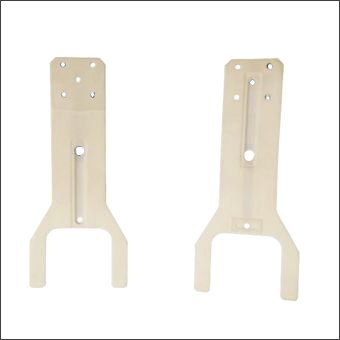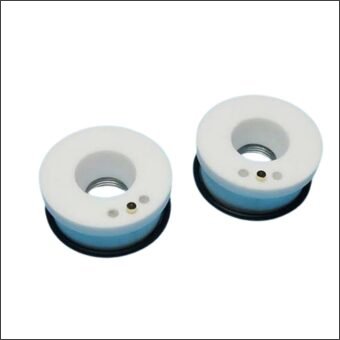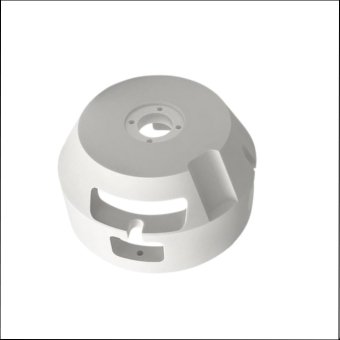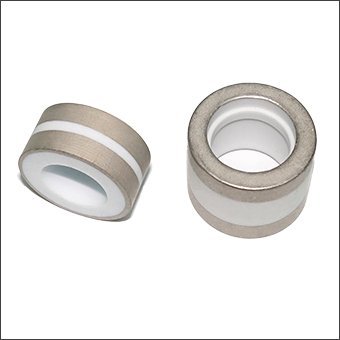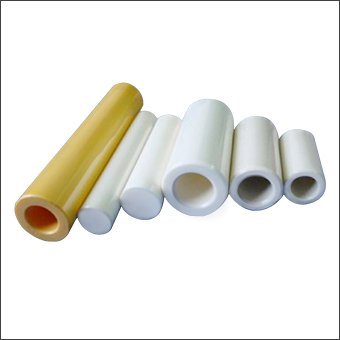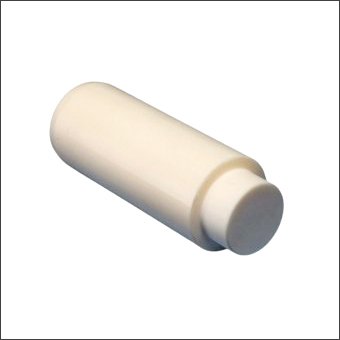Product Overview
Advanced ceramics, after forming and sintering, often exhibit significant shrinkage and surface microcracks during the manufacturing process, failing to meet customer-required assembly precision. Jinghui Ceramics defines precision ceramics as relevant characteristics:
***Precision machining and surface finishing after sintering;
***Ceramic engineering components primarily for industries such as semiconductors, medical devices, new energy and industrial automation;
***Ceramic mechanical and thermal properties use such as high temperature resistance, corrosion resistance and mechanical stability;
***Small dimensional tolerances and complex shapes.
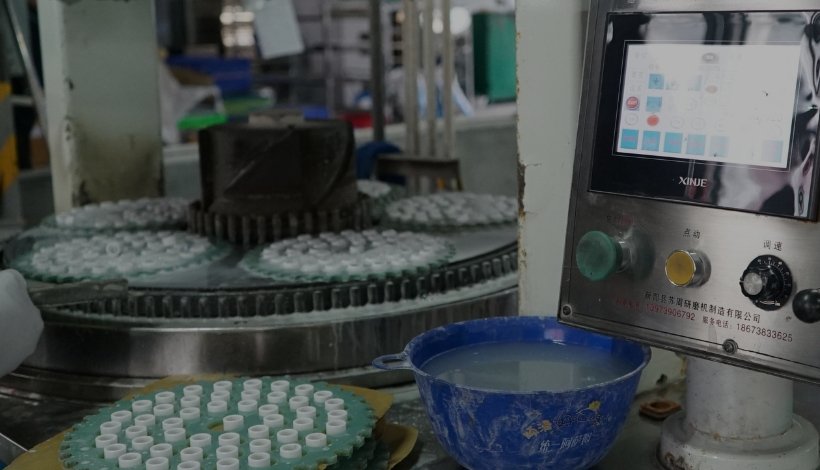
Your Reliable Precision Ceramics Partner
Jinghui Ceramic is a manufacturer of advanced ceramic products with 10+ years of production experience. Our precision ceramic products are based on 4 core material types:
1.Alumina Ceramics (Al₂O₃):
Excellent comprehensive performance, high mechanical strength, good electrical insulation, cost-effective.
2.Aluminum Nitride Ceramics (AlN):
High thermal conductivity (170-230 W/m·K), thermal expansion coefficient matching silicon.
3.Zirconia Ceramics (ZrO₂):
High fracture toughness, wear resistance, excellent biocompatibility.
4.Silicon Carbide Ceramics (SiC):
Extreme hardness, high temperature strength, excellent thermal conductivity and corrosion resistance.
Our forming technology for precision ceramics include dry pressing, isostatic pressing, injection molding, adapting to different shape complexities. Combined with precision sintering at temperatures exceeding 1600°C, we ensure product density exceeding 99%, minimizing dimensional deviation and cracking.
Advanced ceramics are typical hard, brittle, and difficult-to-process materials with much poorer machinability than metals. Therefore, special cutting tools and materials are required. The related secondary processing mainly includes cutting, grinding, finishing, and some other special processing methods to achieve the micron-level tolerances required by customers.
To date, we have served over 500 customers in sectors including medical, green energy, and semiconductors. We are committed to implementing our technology and creating value through our experience. Therefore, we are not just a supplier, but also a partner. We look forward to welcoming you.
Product By Applications
Precision ceramic parts are mostly customized according to customer requirements, and different industries and applications have different requirements for customization. The professional ceramic solutions for Jinghui Ceramic: semiconductor ceramics, medical ceramics, energy ceramics and other precision ceramics.
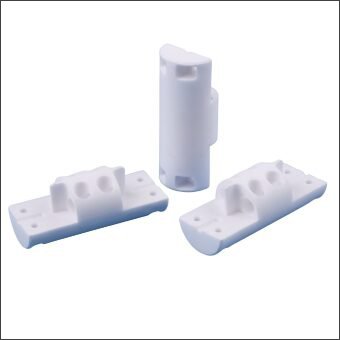
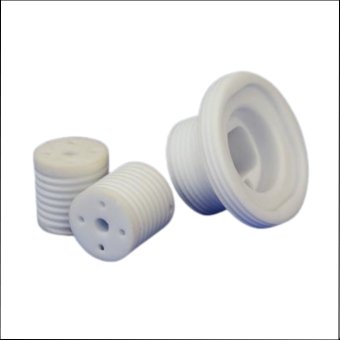
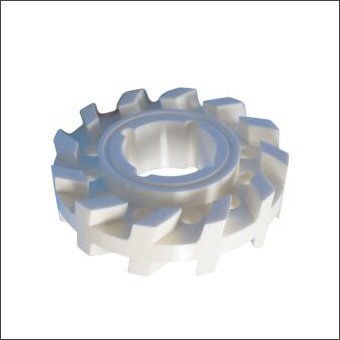
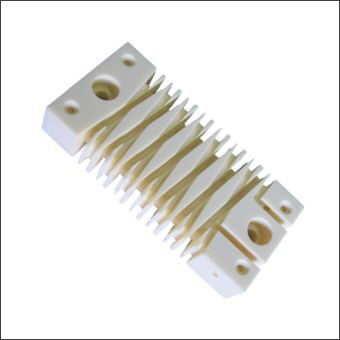
Precision Ceramics Parts Machining Technology
After sintering, some advanced ceramic products can be used directly, while others require further machining according to customer requirements before they can be used as engineering components. The ability to control secondary processing technology is sometimes more important than the forming and sintering processes, as it often determines the assembly accuracy of the product in actual use.
Cutting is typically performed in the following three situations: precision and ultra-precision cutting of ceramic materials, cutting of pre-fired structural ceramics or machinable ceramics, and special cutting of ceramic materials.
Grinding is the most common ceramic processing method. Essentially, it involves the friction between the abrasive grains on the grinding wheel and the surface of the ceramic part. The contact area of the ceramic part first undergoes elastic deformation, then plastic deformation, and finally forms chips that gradually separate from the body.
Finishing can significantly improve the surface quality of ceramics and also stabilize or improve the processing accuracy.
Special machining mainly includes ultrasonic processing, electrical discharge machining, and laser machining. These technologies have been adopted as ceramics have become more brittle and difficult to process.
Related Products
Quality and Reliability of Precision Ceramic Parts
We implement a strict quality assurance system to ensure each precision ceramic product meets specifications:
-
Raw Material Inspection: Analysis of ceramic powders for purity, particle size distribution, and impurity content
-
Process Monitoring: Use of Statistical Process Control to monitor manufacturing parameters and ensure batch consistency
-
Performance Testing: Finished product inspection for dimensional accuracy, density, hardness, and surface quality
-
Reliability Verification: Sampling for strength testing, thermal cycling tests, and chemical stability validation
Quality control objectives for precision ceramic parts
Customer Satisfaction >95%
On Time Delivery >96%
QPPM <7000 PPM
Typical dimensional tolerances achievable
Through advanced CNC machining and grinding technology, precision ceramic components typically achieve dimensional tolerances of ±0.001mm to ±0.01mm, depending on part size, complexity and material characteristics. For small precision components, certain critical dimensions can even be controlled to ±0.0005mm. Surface finish can achieve mirror effects of Ra ≤ 0.01μm, meeting the most stringent industrial application requirements.
Jinghui Ceramics has 10+ years of experience in the production of advanced ceramic products. Based on the characteristics of different fields, combined with different material properties and different technical requirements, we meet customers’ customization requirements and help customers’ career development with high-quality products and professional services.
The main difference lies in the precision level and machining processes. Precision ceramics must undergo secondary processing such as fine grinding, CNC machining, and polishing after sintering to achieve tight dimensional tolerances (typically micron-level) and complex geometrical requirements. They are specialized for use as high-precision structural components, whereas traditional engineering ceramics are often used directly after sintering or with only simple processing, with relatively lower precision requirements.
In high temperature applications, aluminum nitride ceramics offer excellent thermal conductivity (170-230 W/m·K) and thermal expansion coefficient matching silicon, making them most suitable for thermal management components; silicon carbide ceramics maintain high strength at extremely high temperatures (>1600°C), ideal for high-temperature structural components; alumina ceramics provide good comprehensive performance and cost-effectiveness, suitable for insulation and structural applications in moderate temperature environments. Selection requires comprehensive consideration of operating temperature, thermal shock, thermal conductivity requirements and cost factors.
The most commonly used ceramic for medical implants is zirconia ceramics, due to its high fracture toughness, wear resistance and excellent biocompatibility without causing immune reactions; followed by alumina ceramics used in load-bearing areas such as joint replacements. These materials offer advantages over metal implants including better wear resistance, no metal ion release, and elastic modulus closer to bone, reducing stress shielding effects.
In semiconductor equipment, precision ceramics are mainly used for wafer handling robots (high rigidity, low contamination), plasma etching components (corrosion resistance, high purity), vacuum chucks (flatness, electrostatic control) and process chamber liners (high temperature resistance, erosion resistance). These applications fully utilize ceramics’ high purity, plasma erosion resistance, electrical insulation and dimensional stability, ensuring high yield and reliability in semiconductor manufacturing processes.




